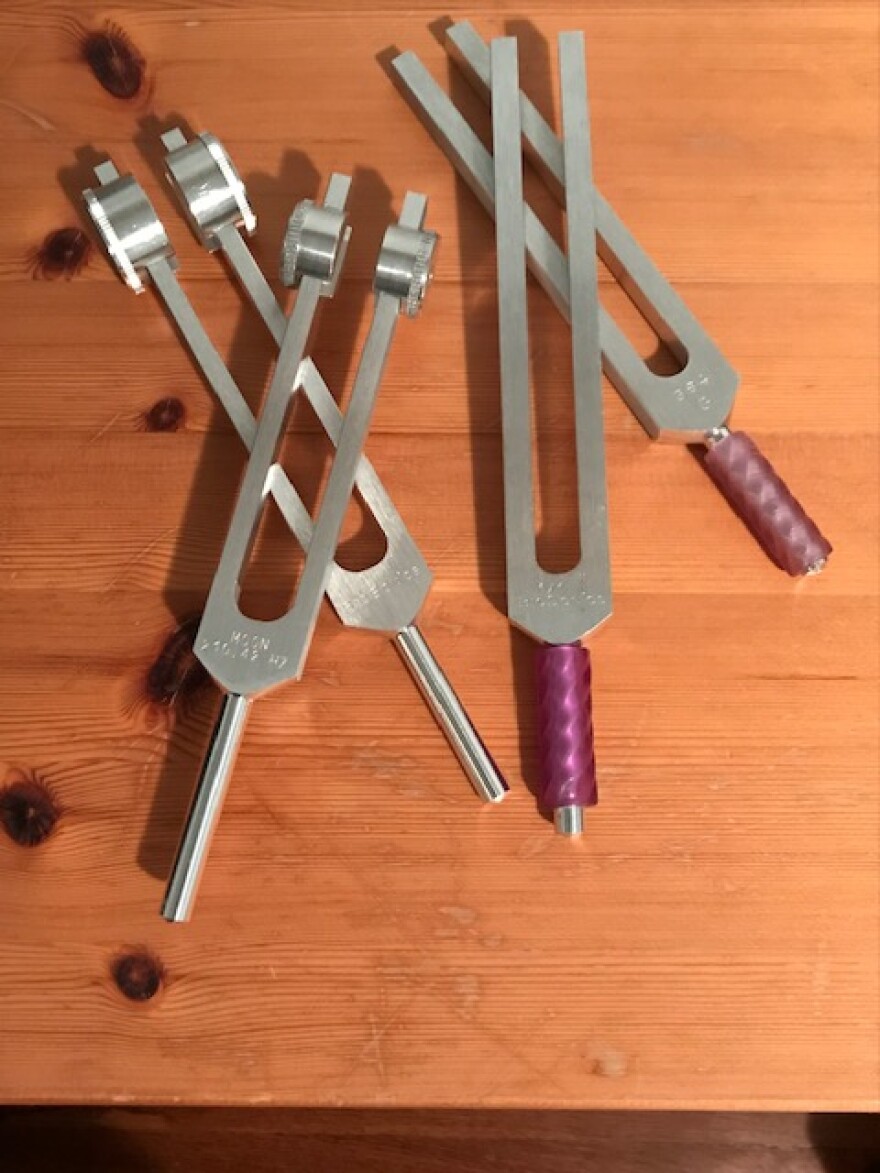Picture this: You walk into a room and lie down on a yoga mat. Musical instruments sit at the front of the room. You close your eyes and hear a sound that's somewhere between a gong and a bell. Then a few rings of an actual bell, like the “all aboard” on a trolley if the conductor wanted you to focus on your own consciousness. Then a chime like a grandfather clock with an intriguing resonance. By this time, if all is going well, you’re in a bit of trance.
People have many ways of coping with stress, from comfort food to walks and bubble baths. Now, some people in Southwest Michigan are trying sound baths when they need to relax. They’re going to sessions led by sound immersion therapists, who believe that the technique can help people to heal.
“Every organ, every system, every cell in your body has a vibration,” says Kalamazoo-based sound therapist Judy Huxmann.
“There’s the healthy optimal vibration, and then, when we come down with a disease or an illness or a trauma, that sets off a series of vibrations that are irregular and irritating.”
That’s probably further than science is willing to go. But instruments like singing bowls have been used in healing for thousands of years. And some studies have found that sound therapy can reduce people’s stress.
Huxmann began studying sound meditation therapy in 2012 and has incorporated it into her massage and yoga practice ever since. She says that sound immersion meditation has a significant effect on her.
“I like to think of it, what happens to me is I like leave the room: psychically, spiritually, mentally. Everything just kind of, goes into that quiet ethereal place and my body is able to resonate with the sounds.”
Huxmann says that every session of sound meditation is different. There is no set routine in the order she plays her instruments. She lets her intuition and the responses of the participants guide her choices.

Early in the session she uses a ghanta, an instrument that Huxmann says breaks up stagnant energy. She walks around the room as she plays it. Next, you might hear the sound of crystal pyramid, which Huxmann says pulls participants deeper into a trance-like-state where healing can begin.
Tibetan bowls, which have been around since before modern civilization, are also played at different pitches. Huxmann says each one aligns with different energy centers in the body, known as chakras.
The crystal bowl is played in the key of F. Huxmann says that this key has measurable positive effects on the body. Deanna Bush is a music therapy faculty member at Western Michigan University. She also claims that pitches can affect the body differently.
“All the different tones that we use, again can affect different parts of us. Like when I use tuning forks, I’ll use a C and a G, because that helps with relaxing those cells that we have, clearing them out. I’m not saying that sound is healing, I feel like, to me, sound is something that adds to the healing process.”
Huxmann says that certain sounds may trigger an intense emotion that could make a participant want to leave the room. Like the ocean drum, which can bring up intense emotions associated with water. But that’s not all that participants might experience.

“I had people tell me that they had visitations from relatives, dead relatives. People that they loved and missed a lot would come. And somebody said they swore there was somebody’s hand on their shoulder.”
Karin Larsen, a regular participant of sound immersion, describes it as a full-body experience.
“When the session was over, I can’t tell you when the background music stopped. And that it was just full sound therapy that was going on because my whole body had adjusted to the frequencies that were being played.”
Not everyone comes into sound immersion session expecting it to work, but Huxmann says she invites the skepticism.
“Skepticism is a good thing. It’s like, ‘prove it to me,’ and if they are willing then their mind is open enough to experience it.”

Huxmann says that more and more people have begun incorporating sound immersion into yoga classes and meditation sessions. A Kalamazoo non-profit founded in April of 2019 aims to educate the Kalamazoo community on the benefits of sound meditation. The Wind Willow Consortium will present a Sound Immersion Workshop each year featuring local and world-wide guests. They’re still working on a date of the 2020 conference.


